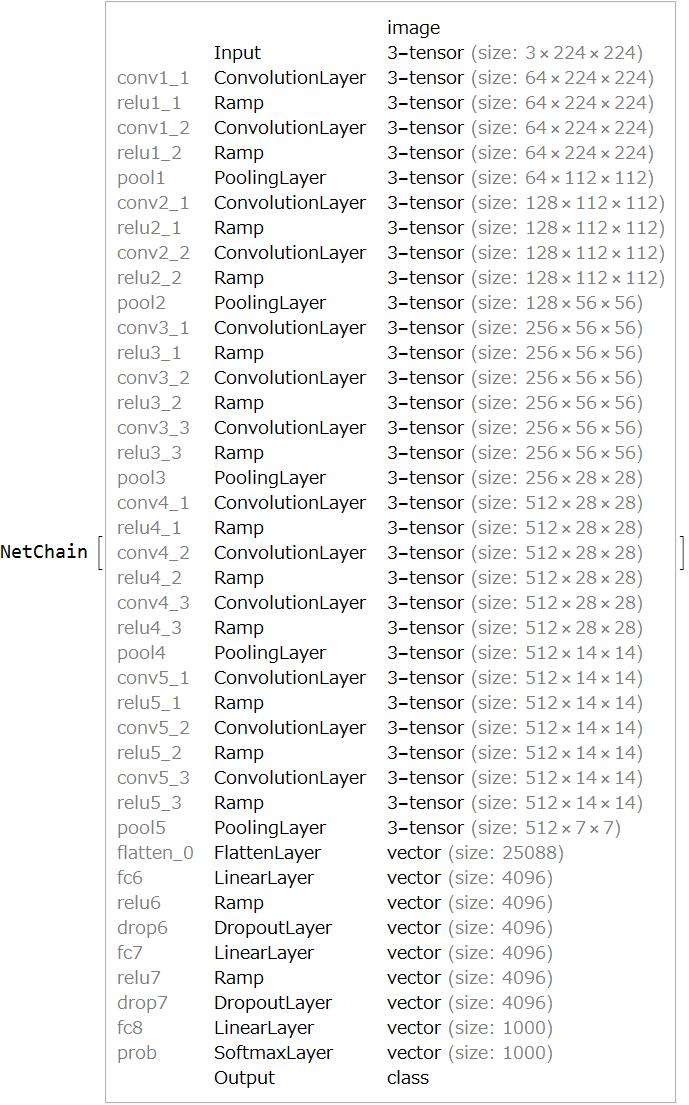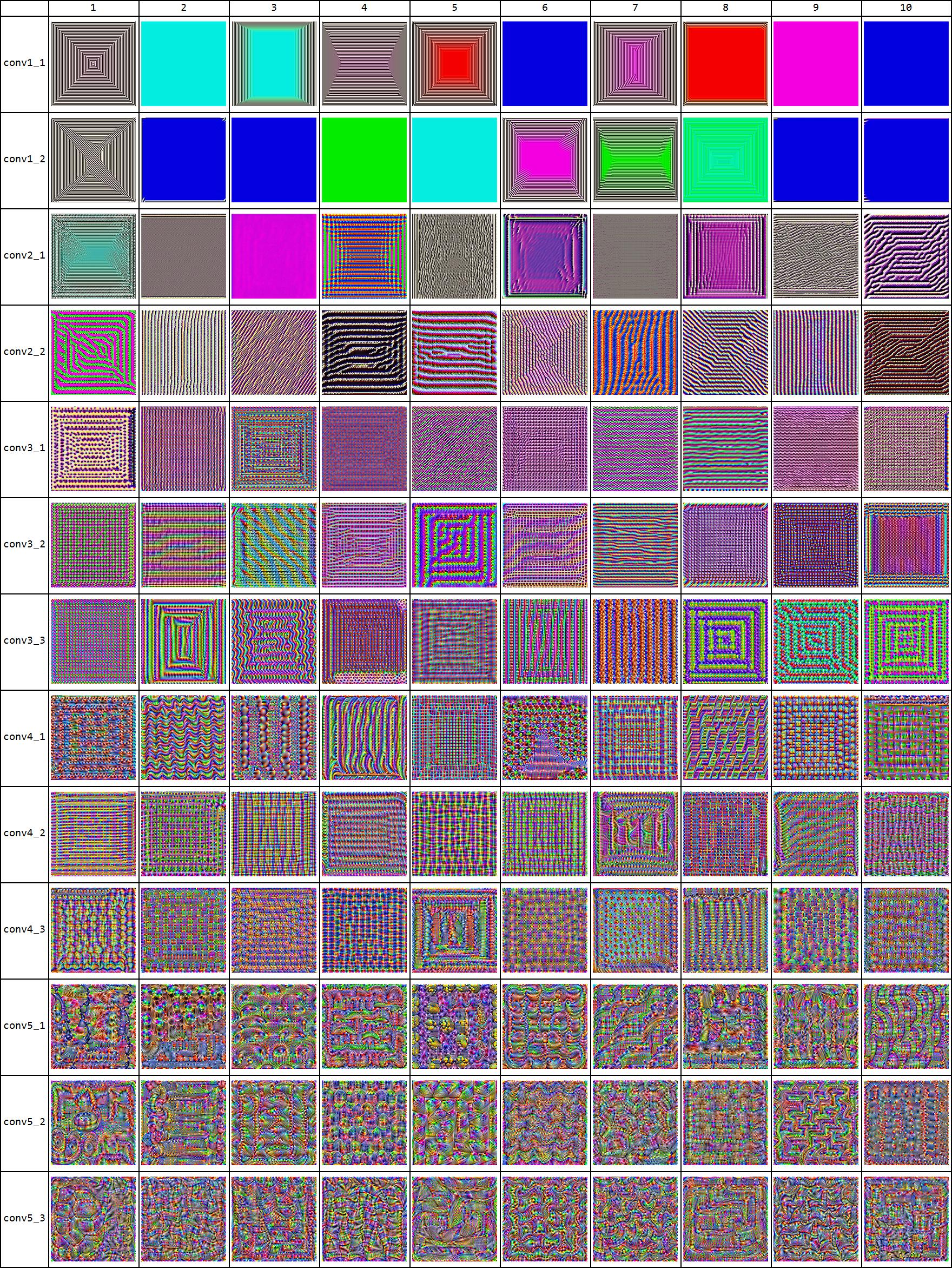This is the pelican which Neural Networks(VGG-16) look.

I referred this post to the presentation by Markus van Almsick at the 2017 Wolfram Technology Conference. In addition to the information posted here, this presentation contains a variety of interesting and useful information of how to use WL deep learning framework.
Introduction VGG-16
VGG-16 is one of the representative models in deep learning to identify the main object in an image. Fortunately we can get the pre-trained VGG-16 from the Wolfram Neural Net Repository.
vgg16 = NetModel["VGG-16 Trained on ImageNet Competition Data"]

VGG-16 is able to identify an image.


The probability is 99.59%
vgg16[img, {"TopProbabilities", 1}]

What is the pelican of the probability 1(=100%) ?
What does VGG-16 look?
Find an image to maximize the part(145th element) corresponding to the pelicans of the output(size:1000 vector) of the layer fc8 which is the layer before the last of VGG-16.
NetExtract[vgg16, "fc8"]

classes = NetExtract[vgg16, "Output"];
pelican =
Position[Normal[classes]["Labels"],
Entity["Concept", "Pelican::jpfg7"]][[1, 1]]
145
Start with an image of all 0, then gradually tweak the image towards what VGG-16 looks like pelican. Define a loss function below as each element of the output is 0 or more and NetTrain minimizes the loss.
Loss = NetChain[{ElementwiseLayer[x \[Function] -x]}];
Create a new network using the subnet of VGG-16.
net = NetGraph[<|
"image" ->
ConstantArrayLayer["Array" -> ConstantArray[0., {3, 224, 224}]],
"vgg16subnet" -> Take[vgg16, {1, -2}],
"select" -> PartLayer[pelican],
"Loss" -> Loss |>,
{"image" -> "vgg16subnet" -> "select" -> "Loss",
"Loss" -> NetPort["Loss"] }]

Train the new network. The training data is dummy as it is unnecessary. And the subnet of VGG-16 does not undergo training and is left unchanged by NetTrain.
Off[First::nofirst]
trainedNet = NetTrain[net, <|0 -> {0}|>, "Loss",
LearningRateMultipliers -> {"image" -> 1, _ -> None},
MaxTrainingRounds -> 2000];
Retrieve the image that VGG-16 looks like pelican from the trainedNet.
meanColor = Normal[NetExtract[vgg16, "Input"]]["MeanImage"];
idec = NetDecoder[{"Image", "MeanImage" -> meanColor}];
vgg16pelican =
idec[NetExtract[NetExtract[trainedNet, "image"], "Array"]]

vgg16[vgg16pelican]

The probability of this image is 100%!
vgg16[vgg16pelican, {"TopProbabilities", 1}]

Examples

What does each layer of the VGG-16 look?
As the same above, find an image to maximize the activation of the filters in different convolutionLayers of the VGG-16.
There are 13 ConvolutionLayers.
layernames = (NetExtract[vgg16, All] // Keys);
convlist = Select[layernames, StringTake[#, 1] == "c" &]

The number of filters in each convolutionLayer is
(NetExtract[NetExtract[vgg16, #], "Output"] & /@ convlist)[[All, 1]]

Start with an image of all 0, then gradually tweak the image to maximize the activation of each filter. Define a loss function below.
Loss = NetChain[{ElementwiseLayer[x \[Function] x^2],
SummationLayer[], ElementwiseLayer[x \[Function] -x]}];
Create new networks and train the networks of the first 10 filters in each layer.
Off[First::nofirst]
result = {};
Do[
subnet = Take[vgg16, {1, convlist[[j]]}];
Do[
net = NetGraph[<|
"image" ->
ConstantArrayLayer["Array" -> ConstantArray[0., {3, 224, 224}]],
"vgg16subnet" -> subnet,
"select" -> PartLayer[i],
"Loss" -> Loss |>,
{"image" -> "vgg16subnet" -> "select" -> "Loss",
"Loss" -> NetPort["Loss"] }];
trainedNet = NetTrain[net, <|0 -> {0}|>, "Loss",
LearningRateMultipliers -> {"image" -> 1, _ -> None},
MaxTrainingRounds -> 300, BatchSize -> 1];
AppendTo[result,
idec[NetExtract[NetExtract[trainedNet, "image"], "Array"]]];,
{i, 10}];,
{j, Length[convlist]}]
Retrieve the image that each filter looks from the trainedNet. These images gradually become more complex patterns as the layer becomes deeper.
Grid[Join[{Join[{""}, Range[10]]},
Flatten[{convlist[[#]], Partition[result, 10][[#]]}] & /@
Range[Length[convlist]]], Frame -> All, Spacings -> {.5, .5}]
